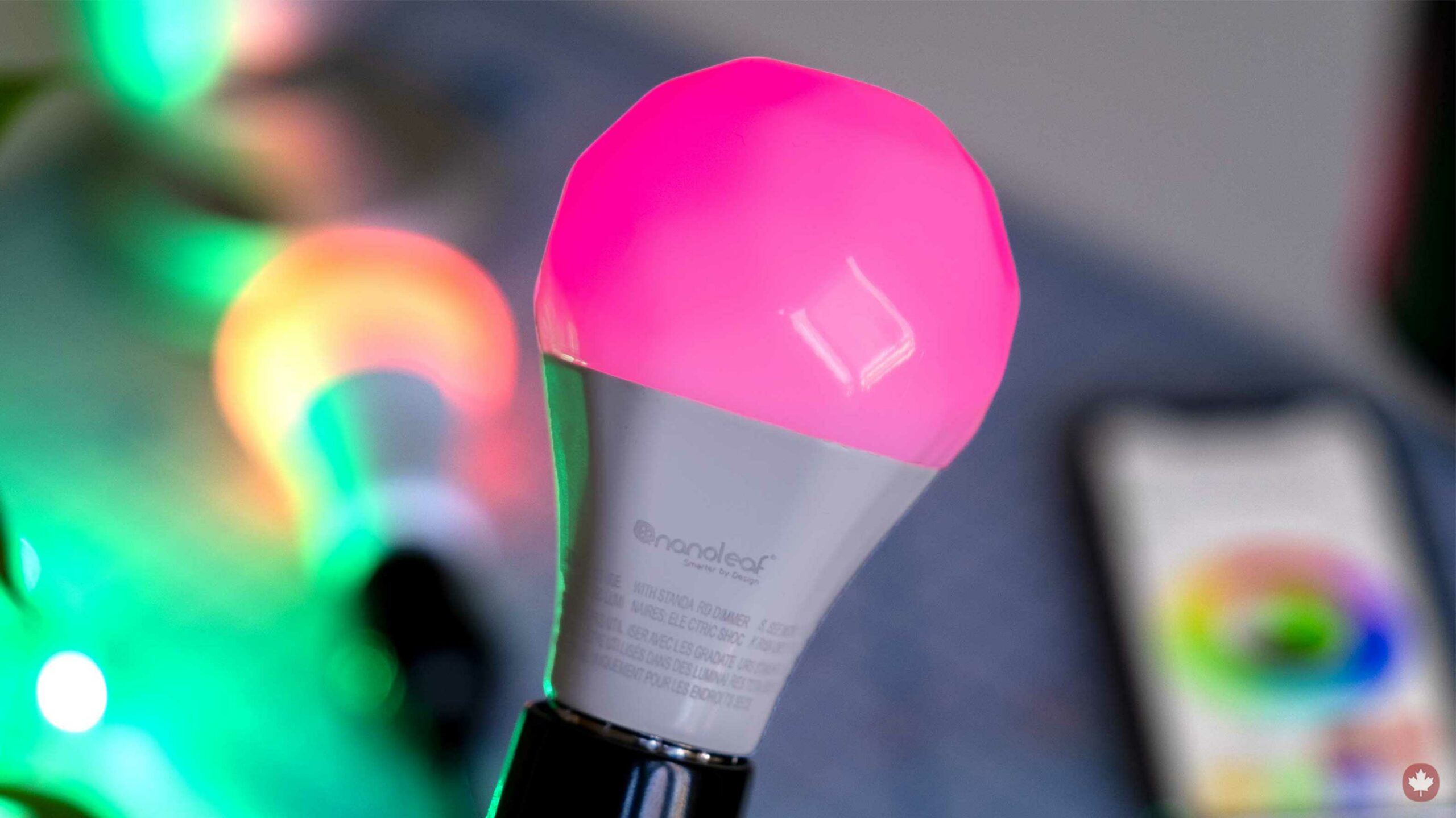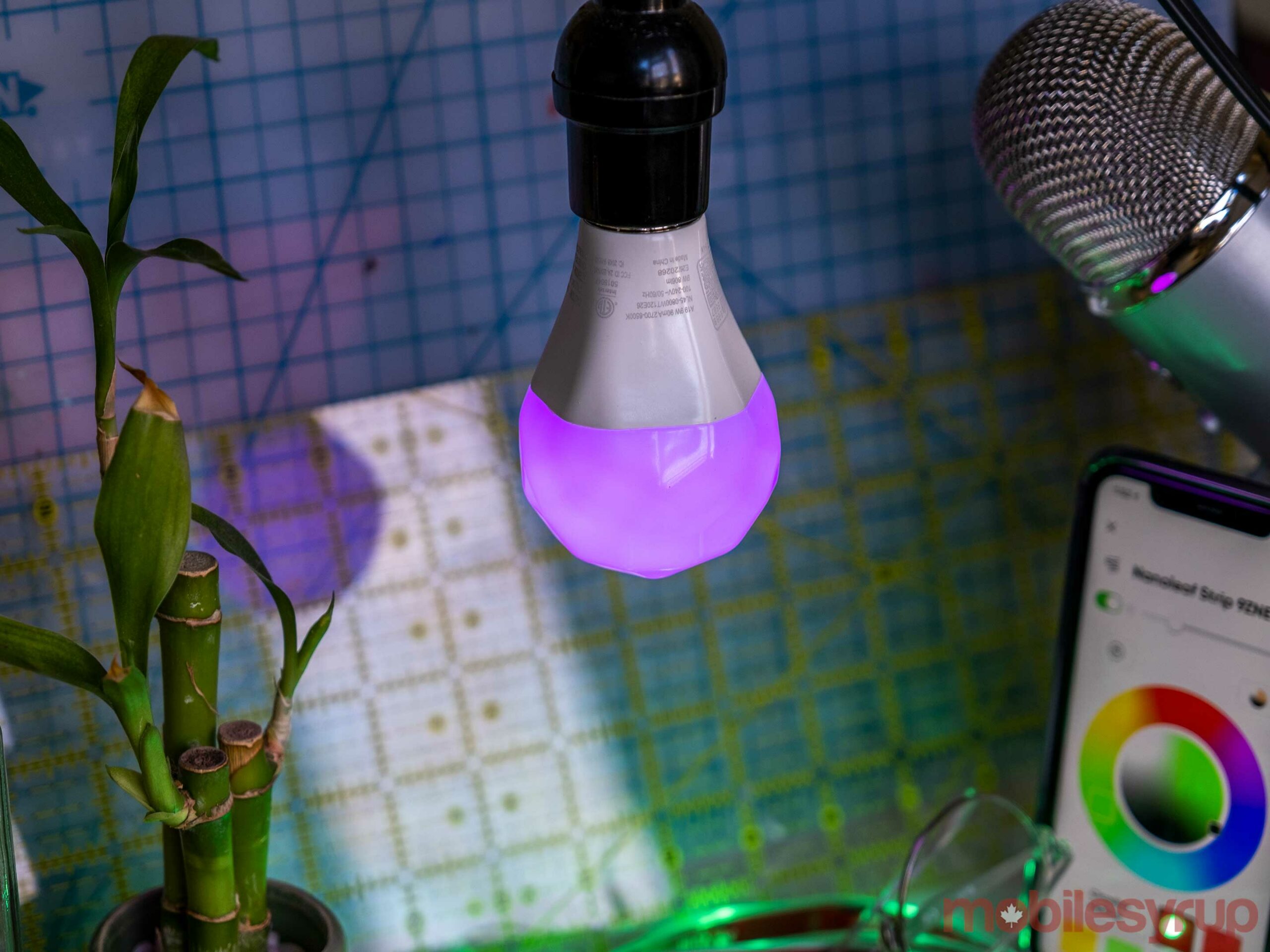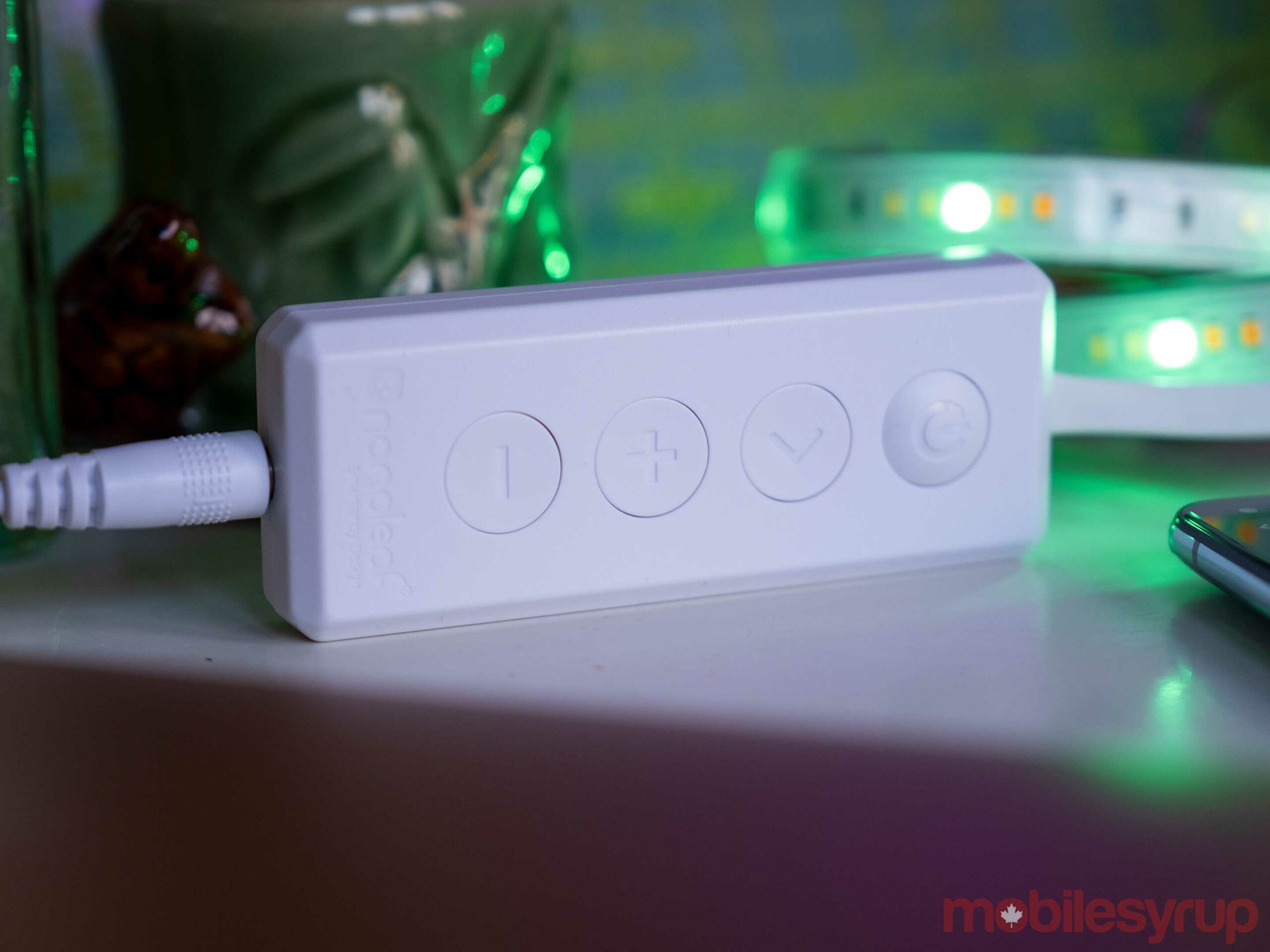
There are tons of smart light brands out there, but in my testing of the latest A19 Essential bulb from Nanoleaf, I’ve found it to be among the best.
While the Toronto-based company’s app still needs some work, the lights themselves are reasonably priced and work well. They’re very bright, decently responsive and offer a wide range of colours. There are a few other interesting features, but like most smart lights, I found myself simply using voice controls to turn them on and off.
Part of this is because I spend most of my time interacting with smart lights via the Google Home app, and when it boils down to it, no matter how cool a smart light feature is, I think most people use smart lights a lot like traditional lights.
A smart bulb with some flair
Ever since smart bulbs have come onto the scene, they’ve tried to re-invent the look of lighting. While I enjoy LIFX’s spotlight-esque shape, the geodesic-dome that Nanoleaf calls its ‘ Rhombicosidodecahedron,’ takes the cake.
There’s something vaguely futuristic-looking about the light that draws me to it. It’s even made me reconsider some of my home lighting choices to expose the bulb since it looks so unique. The bulb has an average brightness of 800 lumens but can reach a peak brightness of 1,100 lumens when you’re using white light. This really helps a single lamp using one of these bulbs brighten up a room.
On the other hand, the Lightstrip looks like all light strips, but it has a peak brightness of 2,000 lumens, and I’ve found it perfect for lighting my little impromptu work from home photo studio. The real plus of the Lightstrip’s design is the small controller integrated into it that allows it to be easily controlled without messing around with smart controls.
When the bulb and the strip are set to a colour, they really shine and look fantastic. The bulb especially, with colourful options showing off all of its angles in an appealing way.
Not that this matters to most people, but the Nanoleaf lights stay cool to the touch all the time, unlike Philips Hue, which don’t get as hot as incandescent lights, but still heat up.
The Nanoleaf app
When you dive into the Nanoleaf app, you’re presented with a few more options and a much more robust colour selection tool. The app also syncs with other lights you’ve added to your Apple Home app, which is a nice touch. However, it only gives you the option to turn them on/off and change colours.
When it comes to the Nanoleaf lights, you can also enable ‘Circadian Lighting’ which adjusts the colour temperature and brightness throughout the day to make them more comfortable for your eyes. This means bright white light during the daytime and warmer yellow lights at night. This is a lot like the ‘Adaptive lighting’ feature built into the Apple Home app, but the Nanoleaf’s version only works with its own lights, Apple’s take on the feature works with all lights that support it, which as of now is basically none, but Hue support is on the way.
If you have a house full of Nanoleaf lights, or even a room, this is a cool feature, but it’s a bit annoying for someone like me that has a wide variety of smart lights from different manufacturers.
I also found that the light was much more responsive when controlled through my iPhone. It took a few seconds to load up whenever I tried to use the Nanoleaf app on the OnePlus 8T. That said, neither experience was overly laggy, and I’d say both worked well.
As I said at the top, these app issues don’t really matter to me since I control the lights mainly via the Google or iOS Home apps. It should be noted that that as far as I can tell, the lights don’t support Alexa. I’ve reached out to Nanoleaf for more information and will update the story when I hear back.
One big minus I have with the Nanoleaf app is that the cloud save functionality is very glitchy. Once again, this doesn’t matter too much to me since I don’t use the app, but if you have a bunch of Nanoleaf lights and you and your partner or roommate both want to control your lights via the Nanoleaf app, it might not work.
How do these lights stand out?
Overall, these lights stand up against established players like Philips Hue because of a few future proof additions that the company has added to them.
First off, there’s support for a new wireless protocol called ‘Thread.’ This is kind of like Zigbee, but offers lightning-fast light controls and better reliability. The only issue is that most people who get these lights won’t have other Thread compatible gear like the HomePod mini or the Nest Wifi. That said, it’s nice to have support for this tech in your lights in case you eventually buy a better router.
I don’t have any Thread compatible gear, so I just use the lights over regular Bluetooth and they worked fine. If you’ve ever used lights from Philips Hue or any other regular smart light, these perform about the same.
The real standout features for me is that a Canadian company makes the lights, and that they’re much cheaper than Philips Hue bulbs, which also require a hub. The Nanoleaf lights also work just as reliably in my testing over the past month with Google Assistant commands, making me want to get a few more to round out the smart lighting in my apartment.
Nanoleaf showed off an ambitious smart lighting concept called the ‘Learning Series’ at CES 2020. It learns how you move through your home and lights it up accordingly. The idea behind this is to make your lights adapt to you and learn how you move. For instance, if you come home every day and then walk to your bedroom to drop off your wallet and keys, the smart system would learn this and turn on the lights you need automatically.
While this vision isn’t quite here yet, these new lights seem to be the first step in that journey.
If you’re interested in purchasing either of these Nanoleaf smart lights, there are a few ways to do it. The Nanoleaf Essentials A19 bulb is available on the company’s website for $24.99 and Apple’s website for $26.95, while the Essential 80-inch Lightstrip is on Nanoleaf’s site for $69.99 and Apple’s website for a slightly cheaper $65.95. There’s also a smaller 40-inch Lightstrip expansion kit on Nanoleaf’s website for $34.99 (it’s not listed on Apple’s website).
Update 01/07/2021 at 4:50pm: Corrected some details about the Thread protocol and expanded the pricing to include links to Nanoleaf’s website.
Update 17/04/2021: Nanoleaf has added support for Apple’s Adaptive Lighting protocol.
MobileSyrup may earn a commission from purchases made via our links, which helps fund the journalism we provide free on our website. These links do not influence our editorial content. Support us here.







